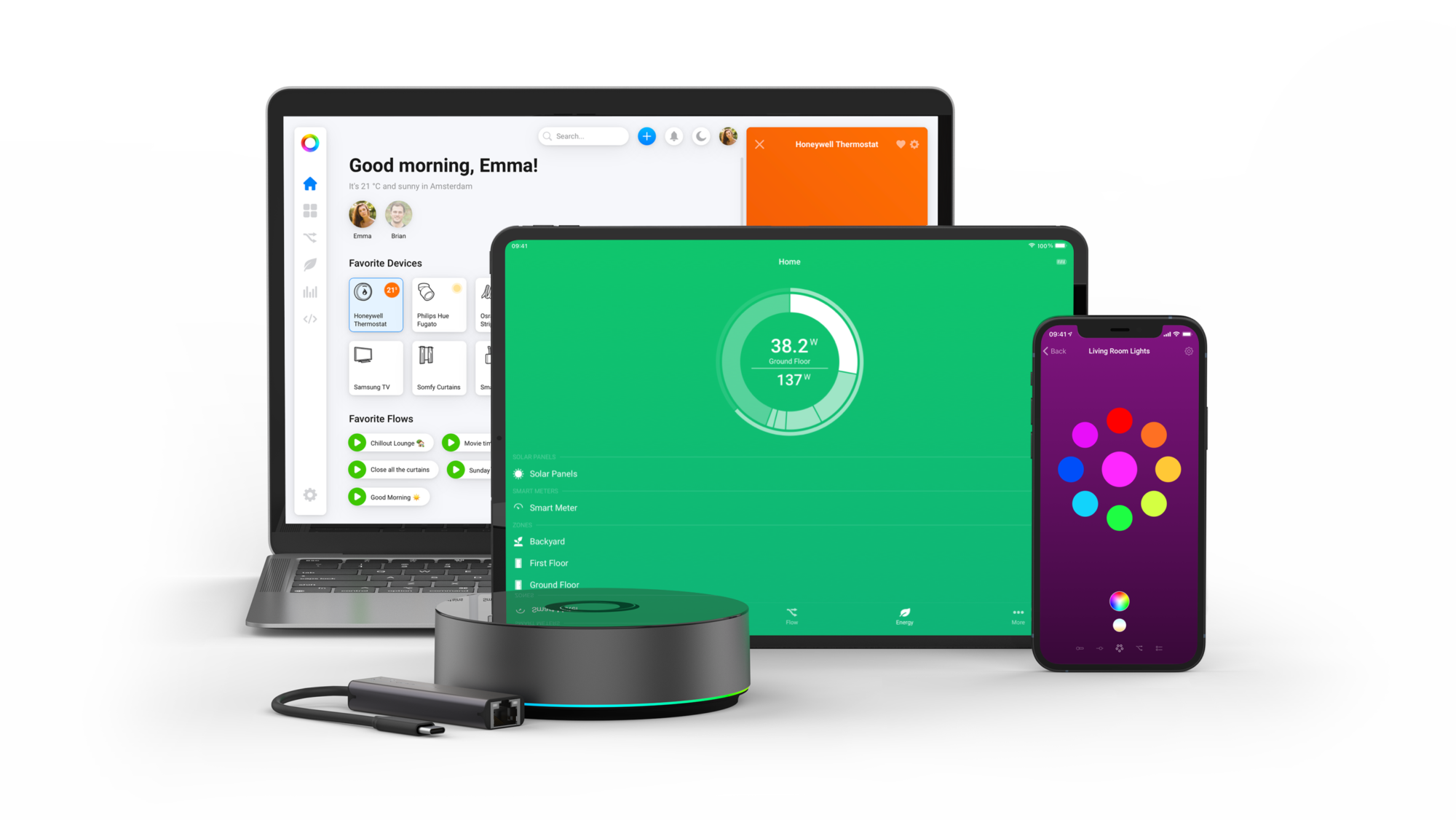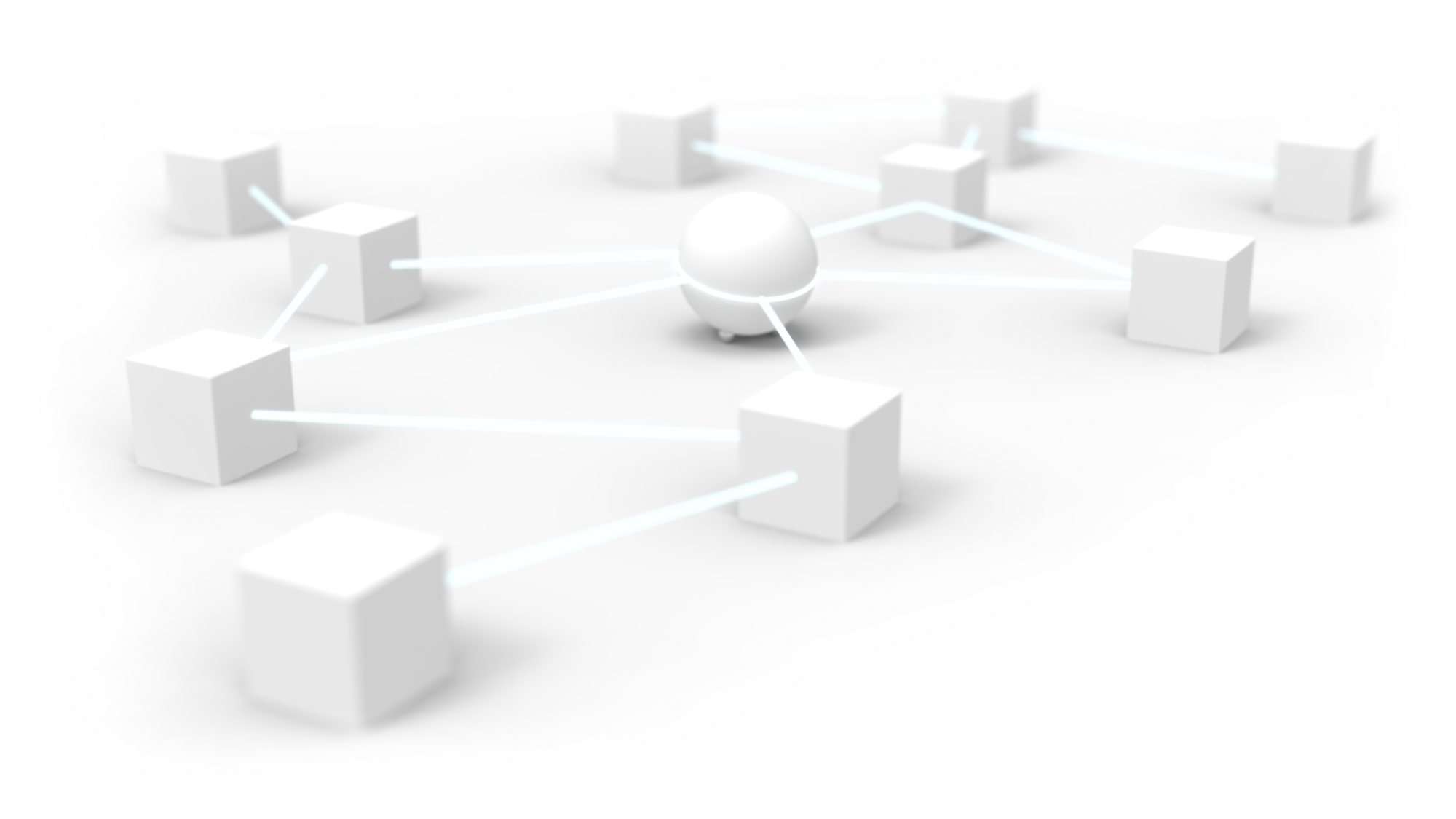
What is Matter?
There's a lot of talk about Matter nowadays. Endorsed by many big names, including Google, Amazon, Apple, IKEA, Somfy, and Homey, it aims to unify the smart home. But what is it exactly? How does this smart home technology work, and what does it do?
Matter at a Glance:
- Communication protocol for smart home devices.
- 1.0 version launched on October 4, 2022, after being postponed twice.
- Standardized set of commands, so devices from different manufacturers can talk to each other.
- Runs on top of IP networks, using either Thread, Wi-Fi, or Ethernet.
- Uses Security by Design and Zero-Trust.
- Runs locally – typically connects to the cloud via a Matter hub.
- Exists alongside other smart home standards like Zigbee, Z-Wave, and 433MHz.
- Battery life and range dependent on wireless networking technology.
- Coordinated by a Matter hub, like Homey Pro.
So, What is Matter?
Matter is a protocol that allows smart devices from different companies to communicate with each other. Basically, devices that 'speak Matter' operate on the same commands. Interesting to know is that it is not a new wireless networking technology, but instead a set of standardised commands sent over local IP networks. Matter uses Thread, Wi-Fi and Ethernet as networking technologies underneath. It can use BLE for pairing, or 'commissioning'. Separating the networking technology and protocol sets Matter apart from technologies like Z-Wave and Zigbee, as these technologies integrate the two.
The largest differences between these different smart home technologies to you, as a user, however, is supported devices. A lot of manufacturers have committed to making some parts of their portfolio compatible with Matter, which is a good thing. However, sometimes you still need another hub. For instance in the case of IKEA Home Smart and Philips Hue, who require a Zigbee hub. This is because these brands will continue to use the Zigbee technology in the bulbs themselves, and support Matter via a hub.
The 1.0 version of Matter was introduced on the 4th of October 2022. Authorized test labs are since then open for product certification. Even though that is around a year ago, the first Matter devices are just beginning to get to market. You could say Matter is taking it slow. Matter is a great promise that will have more and more compatible devices. In the coming years, however, we will see multiple technologies in the smart home space in parallel, with Zigbee already being dominant in lights, Z-Wave in sensors and modules and other technologies again in other fields. Ideally you would want to be flexible between these technologies, and have a system that supports multiple of them.
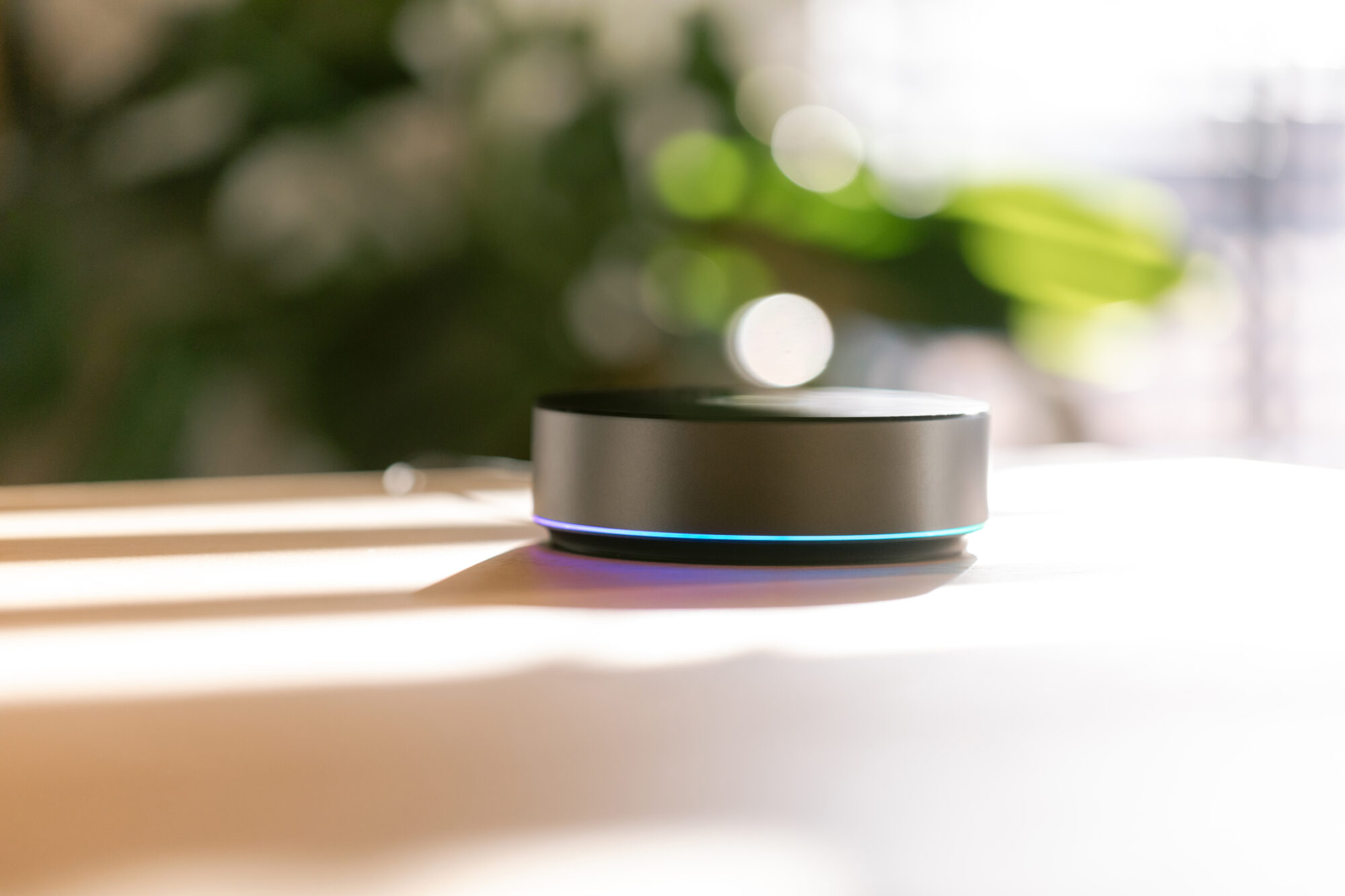
Matter Basics: How It Works
Matter is a standard for the application layer. It uses the Internet Protocol (IPv6) on the Network layer and User Datagram Protocol (UDP) & Transmission Control Protocol (TCP) on the Transport Layer. Matter 1.0 will run on top of Thread (IEEE 802.15.4), Wi-Fi / WLAN (IEEE 802.11), and Ethernet / LAN (IEEE 802.3).
Great! How about some English?
Matter devices can use different technologies to communicate. These can be either wired (Ethernet) and wireless (Wi-Fi, Thread). As noted above, This is different from Zigbee or Z-Wave, which combine the physical, networking, and application layer in one standard (called full stack). All of these networks are local, which means they are governed and controlled within your home. Most Matter hubs include a bridging option to the internet. Some Matter devices that are based on Ethernet or Wi-Fi might connect to the cloud / the internet themselves in a non-Matter way though. This may add a security risk that pure local devices do not have.
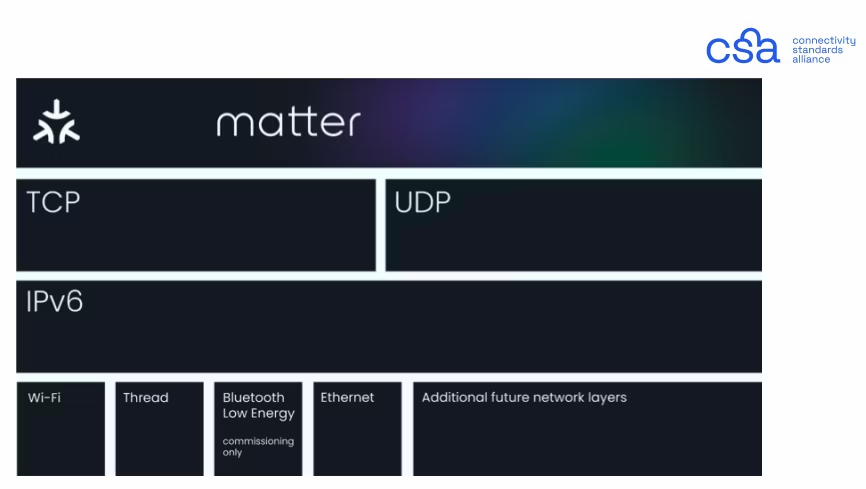
Good to know is that Matter devices cannot always simply talk to each other: while Ethernet and Wi-Fi devices are generally on the same network, Thread is a different network. A Matter border-router is needed to reach Matter devices on Thread. We'll talk more about border-routers later on, when we explore what's in a Matter network.
Thread itself is a low-power and low-latency wireless mesh networking technology. It uses IP, which is why Matter can run on it. Thread is a relatively new technology, that has been built on the foundations of Zigbee. Thread can be found in battery-operated devices requiring the highest energy efficiency like sensors and door-locks or simple mains-powered devices like smart plugs or light bulbs.
In short:
- Matter devices can easily talk to each other thanks to their unified application layer.
- Matter can use Thread, Wi-Fi and Ethernet as physical communication layer.
- Not all of these communication layers are automatically compatible with each other (LAN vs Thread).
- Matter devices on Thread make use of Mesh networking.
Mesh Networking
A mesh network is essentially a network where multiple devices in the network take on the role of a router, or repeater. Rather than only sending signals back to the originator, they repeat signals and forward them to the other network devices within range. These, in turn, can relay the signals further. This 'signal-hopping' gives mesh networks more range and more reliability than traditional 'star networks'. These networks expand automatically when you add more devices. Together, they build a stronger and more reliable network.
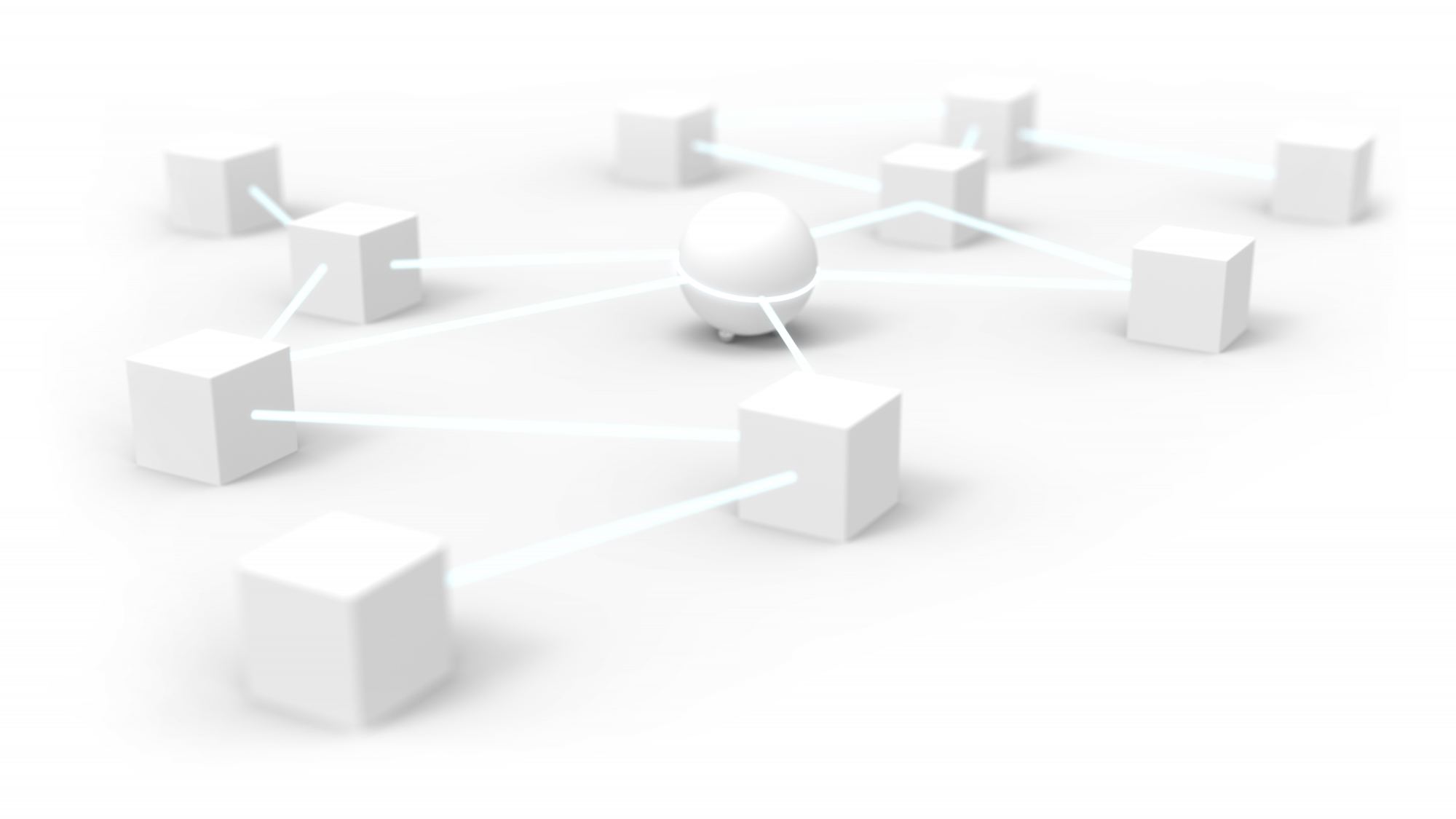
Matter devices only are part of a mesh network if they use Thread as their wireless technology. Most Matter devices are on Wi-Fi and therefore do not create a mesh network.
What’s in a Matter Network?
Matter networks utilize different types of device roles. In total, we can differentiate between five different types of devices.

1. Matter Hub: the Coordinator of a Matter Setup
Every network needs a central point. That's the role of the Matter hub. You need at least one to set up your Matter network, although you can have more. Some Matter hubs are also Matter border-routers, like Homey Pro, but they don't have to be.
The Matter hub is the brain of your network. The coordinator can connect smart devices, set permissions, allow other devices access, and coordinate your network. The Matter hub also delivers the interfaces you use to control your Matter network. This can be interfaces for automation, like Homey Flow, (energy) data like Homey Energy and Homey Insights, or simply a control-interface. The Matter hub is also the gateway to the internet for the Matter network. And some hubs, like Homey Pro, connect your Matter devices to devices that use other protocols, like Zigbee, Z-wave, infrared or 433MHz.
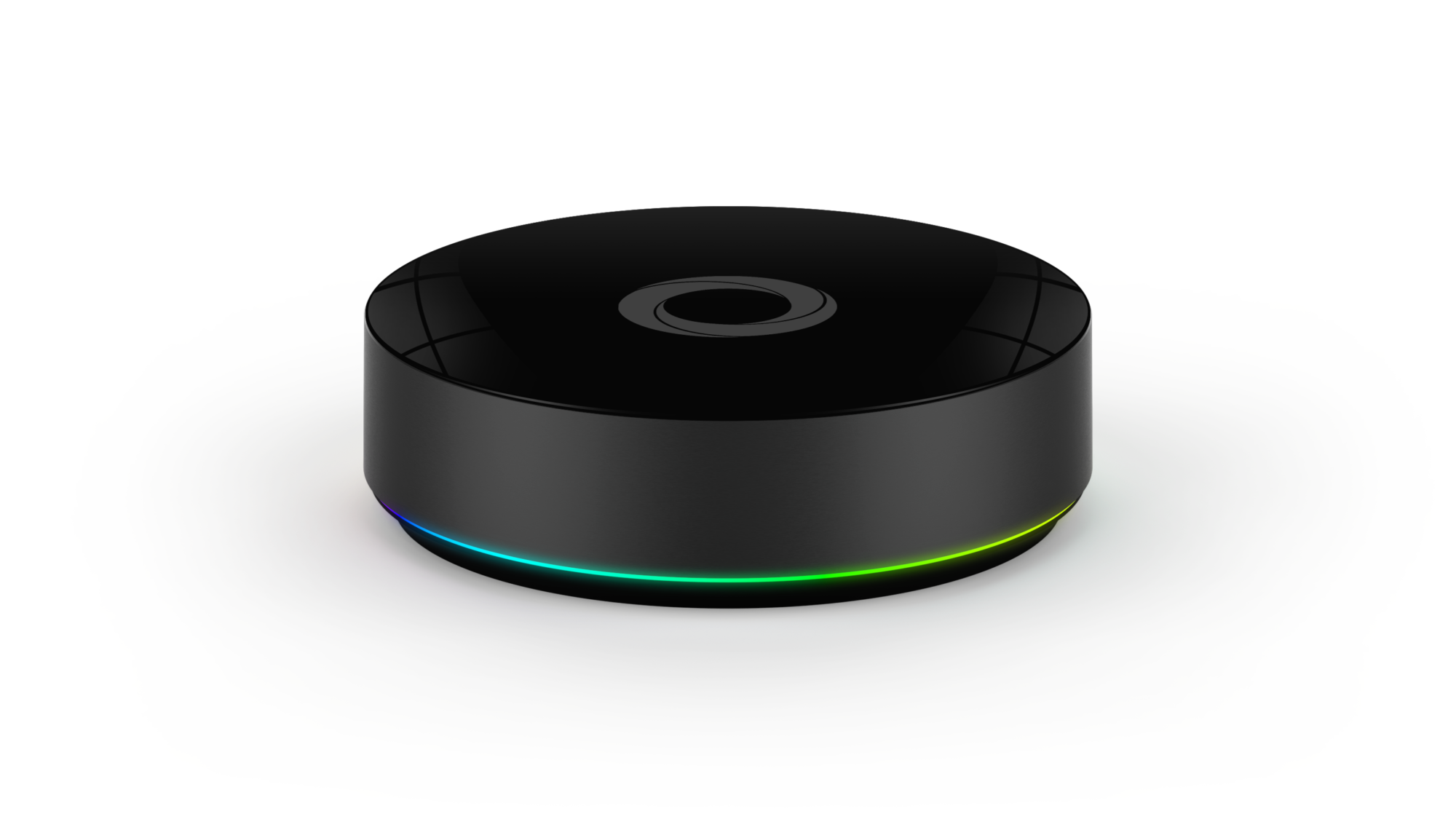
2. Matter Border-Routers: Bridging the Worlds of LAN and Thread
Briefly mentioned before – not all Matter devices can automatically talk to each other. This has to do with the fact that LAN, which is your home network ran on Ethernet and Wi-Fi, is a different network than Thread.
They work fundamentally different. Let's compare the wireless versions: Thread is a mesh network built for low power consumption and bandwidth, while Wi-Fi is a star-topology network built for high bandwidth (and higher power consumption).
To make Matter devices on LAN and on Thread talk to each-other, we need a bridging device that can translate between the two. This is the Matter border-router, sometimes called Thread border-router. It 'speaks' both LAN (Ethernet or Wi-Fi) and Thread, is mains-powered and can relay signals back and forth between the two networks, bridging the gap.
Sometimes, a Matter hub is also a Thread border-router. This is the case if the Matter hub includes Thread itself as well, like Homey Pro.
3. Matter devices
Matter devices are all devices that can be controlled using Matter, and that can connect to your LAN network. They either have an Ethernet or Wi-Fi connection option. They do not repeat any signals or participate in the mesh network, as they do not 'speak' Thread. Note: despite the fact that Matter is a local protocol, Matter devices that are on your Ethernet or Wi-Fi network might also connect to the internet using that network. This is then additional to their Matter capabilities. For instance, an Philips Hue Bridge, which is a Matter Device on your local LAN, can also connect to Philips Hue's servers.
4. Thread Mesh Extenders: Mains-Powered Thread Devices
Thread Mesh Extenders are similar to 'routers' in a Zigbee or Z-Wave network. These devices are mains-powered, so they do not run out of battery, and they act as mesh extenders to repeat Thread signals. They talk to all other devices in range on the network and repeat the network signal. Thread Mesh Extenders only 'speak' Thread, not Wi-Fi or Ethernet. That's why they also cannot connect to the internet themselves.
5. Thread End-Devices: battery-powered Thread Devices
These devices are either the destination or source of data transmitted. Often powered by a small battery, this device does not repeat or forward any signals. I.e., this is the end of your network. In most cases, standard Matter devices will either be on LAN (like Wi-Fi) or will be Thread Mesh Extenders. Unless you choose battery-operated devices such as wireless lights, simple switches, etc. These are typically end-devices because that allows them to work much longer on one battery load.
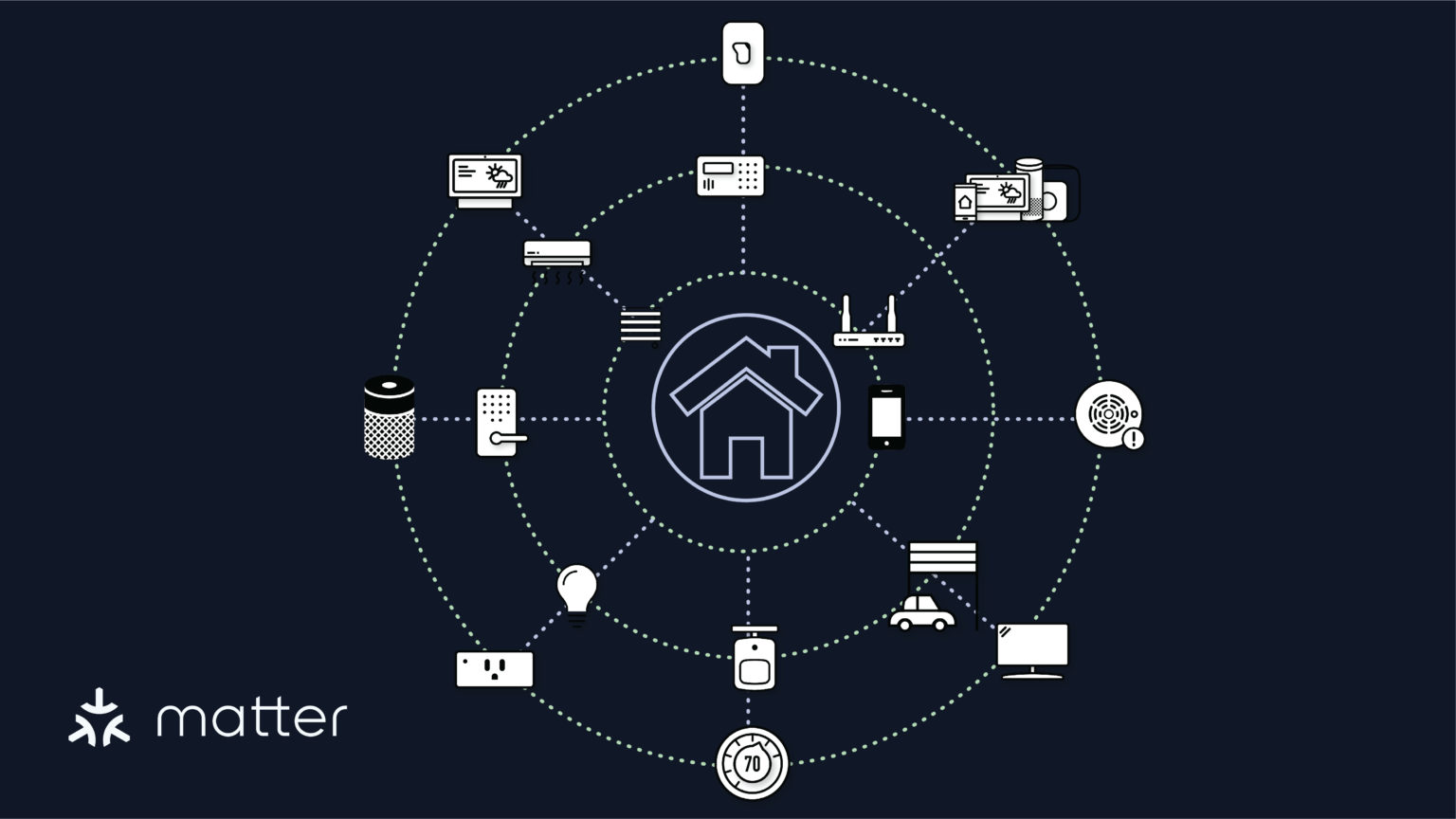
What devices will support Matter?
Important to note is that Matter is brand-new. Despite the fact that there is a lot of hype and anticipation, there are not a lot of Matter devices yet. Even when their number grows significantly in the coming years, it will just be one of the available technologies, also because of manufacturer legacy.
Next to that, the Matter 1.0 protocol that was released in October 2022 by the Connectivity Standards Alliance that governs the technology, supports only these device types:
- Lightbulbs, light switches, lighting controllers
- Plugs and outlets
- Door locks
- Thermostats and other HVAC controllers
- Blinds and shades
- Home security sensors (motion, contact, CO/smoke detectors)
- Garage door controllers
- Wireless Access Points and bridges
- Television and streaming video players
This seems great, but it still excludes a lot of popular types of devices like security cameras, audio systems / speakers or robot vacuums.
Why Use Matter?
The Matter protocol promises a few good things for smart home users and smart home devices. However, it’s not perfect, or "the absolute best" home automation solution. Matter has its pros and cons. Let's start with the pros.
Interoperability – Most Matter devices work together no matter which brand makes them (mind the LAN / Thread difference though!). However, this only applies to all Matter devices, not to all the other smart home devices on other technologies. This makes the interoperability-claim a bit similar to the same one from Zigbee and Z-wave at the moment. Matter has some momentum and a lot of manufacturers behind it, although the first companies are also dropping out again. Its full interoperability claim has yet to come true as well. In the end, universal hubs that combine Matter and other technologies will always be the most interoperable.
Secure – The Matter protocol uses modern, widely used security practices and protocols such as Security by design and zero-trust. Matter uses AES-based encryption. Devices understand commands only if they are authenticated.
Simplified User Experience – Most Matter hubs, like Homey Pro, feature intuitive interfaces for smart home control and automation. Also, the Matter protocol includes a simple pairing process.
Local – Matter is a local protocol, making it relatively reliable and fast. Next to that, Matter devices on Thread cannot connect to the internet directly, giving potential attackers one less possible point of entry. Note that this does not hold up for LAN(Wi-Fi/Ethernet)-based Matter devices. Also, Zigbee and Z-Wave devices share the same local features.
Power-Efficient – Because Thread is a part of the Matter protocol, Matter devices can be very power-efficient. Thread end-devices use very little energy when in standby, which greatly reduces electric usage and improves battery life where relevant. Again, the same holds for Zigbee and Z-Wave devices.
Multi-admin – Matter supports multiple Matter hubs on a single Matter network. Because of this, users can choose their preferred interfaces and systems, and even use multiple in parallel. This removes the need of unpairing and re-pairing devices to a new system, and adds extra flexibility. One tip: use one main Matter hub for automations, else it can be very hard to keep track why something is happening in your home 😉
Disadvantages
Sounds pretty good, huh? At the same time, it's good to be aware that Matter is not perfect. Some disadvantages to Matter:
- There are only a handful of Matter devices on the market at this point, so if you want to stick with Matter-only devices, your selection is severely limited.
- The first version of Matter will not include all types of devices. For example, it excludes security cameras or Robot vacuums, both popular smart home devices.
- Not all brands integrate Matter directly into their end-devices. Brands like Philips and IKEA will still require you to use a Zigbee hub like the Philips Hue Bridge or Homey Bridge or Homey Pro.
- Matter-devices typically use new chips, and are therefore more expensive than their counterparts on Zigbee, for instance.
- Not all devices will support Matter. There's a lot of devices out there using Zigbee, Z-Wave, 433MHz RF, Infrared, proprietary APIs or other smart home technologies.
Getting Started With Matter
Starting with Matter is relatively easy. If you can find Matter devices at this point in time, that is.
Step 1: Choose a Matter hub. We obviously recommend Homey Pro. It allows you to also stay flexible with regards to other smart home technologies.
Step 2: Choose your Matter devices. Take note: not all Matter devices work with all Matter hubs! Particularly Thread end-devices and Thread mesh-extenders only work if the Matter hub includes Thread (like Homey Pro does) or if you also have a Thread border-router in place.
Step 3: Setup your hub.
Step 4: Plug in and connect your Matter devices.
Conclusion
Matter is a very promising addition to the world of smart home. It has a lot of backing by large companies and makes clever use of existing technologies such as Ethernet, Wi-Fi and Thread (and BLE for pairing). However, Matter is currently mostly a promise. We've only just seen the release of Version 1.0. There's not a lot of Matter devices on the market right now, these are certainly not the cheapest options, and not all device types are supported. In the end, there will simply be a lot of products that use different technologies, especially as brands also look at backward compatibility.
At the end of the day, most smart home technologies have a lot to offer. Matter is just one, new option. And, with smart home systems like Homey offering support for multiple protocols, there’s no real reason all your devices have to use the same protocol. Homey Pro supports eight smart home technologies, including Matter of course. Your ideal smart home likely includes a mix of technology, which is why it’s more important that your central hub support everything you need to automate your home.
Want to learn more about what we think is the world's best Matter hub?
Discover Homey Pro as a versatile smart home hub »
